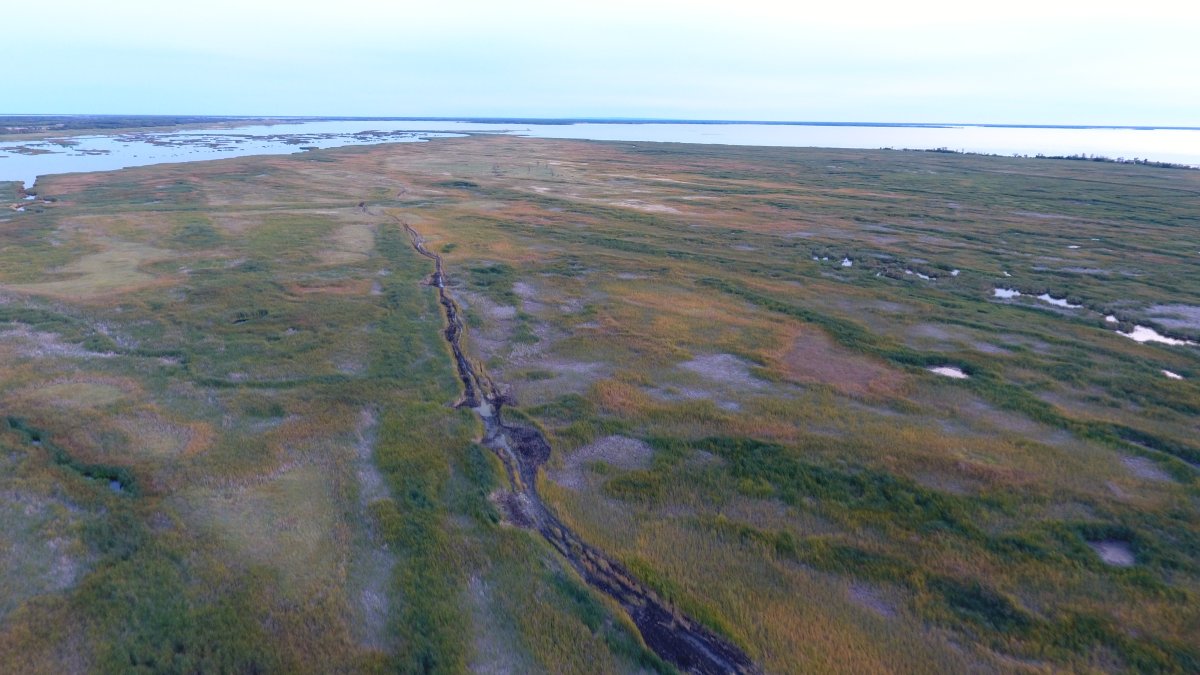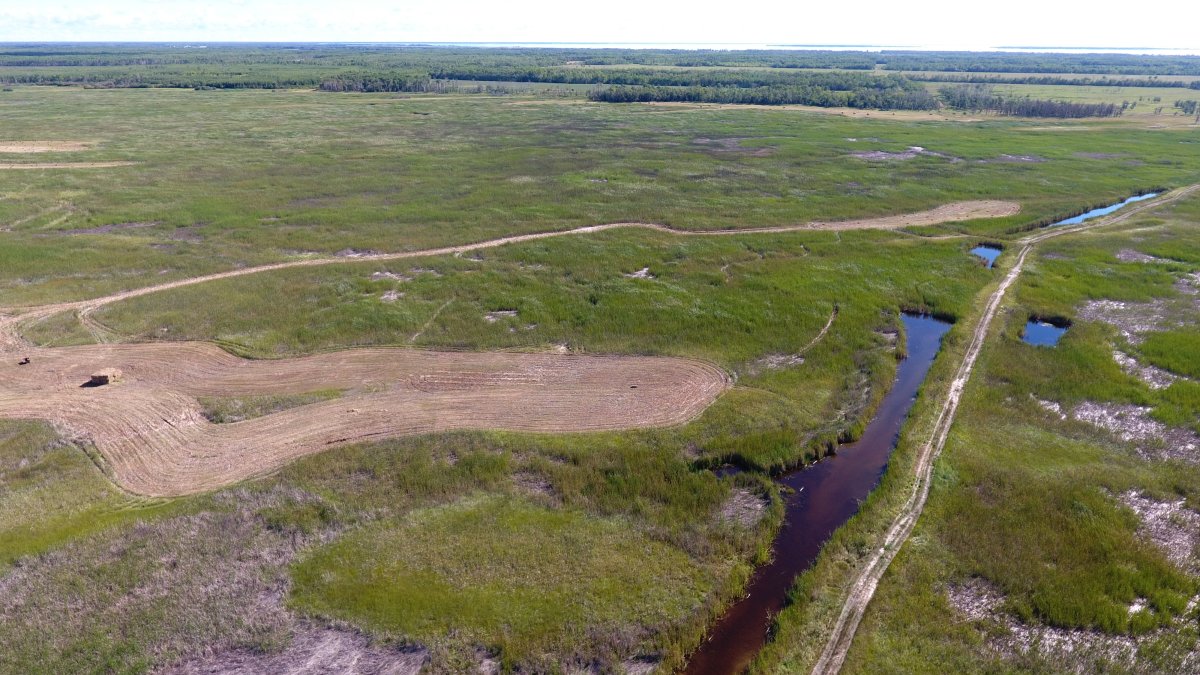After decades of leasing Crown land for their ranch operations, Manitoba farmers say they risk losing their livelihood under newly applied provincial policies and fees.

Dale Myhre says he is almost out of options.
The 66-year-old rancher from Crane River has spent the last two years watching the equity of his ranching operation — his retirement — slip through his fingers.
He and his wife sold their grain farm about 20 years ago and moved to what can easily be described as rugged country, flush with marsh, swamps, brush and wolves.
Nonetheless, Myhre’s family and his son’s family carved out a living, together raising around 600 head of cattle on 24,000 acres near the northern reaches of Lake Manitoba.
The vast majority of the land Myhre is using — 90 per cent by his estimate — is Crown land, owned by the province. The smaller portion he owns, and this is where he’s set up a home, barn and the other necessities of a farm.
“It sounds like an extremely large amount of land, but that’s the kind of land it is,” Myhre says.
“Probably half of the land is very heavy bush where there’s no grass, and another 25 per cent of the land is swamp, but you still need to fence all those areas in. So you have this huge fencing cost, but you can only utilize maybe 25 per cent of the land.”

Two decades ago, Myhre “bought” the land from another farmer. But since the land is leased from the Crown, the transaction was called a “unit transfer.” Myhre and the previous owner agreed on a price, taking into account the improvements that had been made, and had the lease switched over to his name.
But in November 2018, The Crown Lands Amendment Act received royal assent, entirely scrapping unit transfers in place of an auction system, whereby every 15 years the province would send the land to the auction block and the highest bidder would take on the lease.
For Myhre and others, this means when they decide to retire, or move on from farming, there will be little-to-no return on investment for the land or the improvements they’ve made to it along the way.
“The people we bought the ranch from, we paid them a substantial sum, like $500,000, because of all the improvements they made, because that’s the way the system works. And we were fine with that,” Myhre says.
“(Now) whoever bids the highest, they’ll get all our improvements and the government will keep all the money. It’s just so unfair.”
In Myhre’s case, he says that includes more than $100,000 worth of fencing, the heavy machinery to clear fence lines, moving earth for watering areas, and the labour of digging up stones over the years.
There are also a few barns sitting on the Crown land which Myhre paid extra for, but under the amended legislation, if something isn’t removed within 30 days of the lease expiring, it becomes the province’s property.

Get breaking National news
Modernizing and its effects
Blain Pedersen, Manitoba’s Minister of Agriculture and Resource Development, says by disallowing transfers and switching to an auction system, Crown land will change hands more easily and more frequently, allowing for the expansion of the province’s agriculture sector.
- ‘Alarming trend’ of more international students claiming asylum: minister
- TD Bank moves to seize home of Russian-Canadian jailed for smuggling tech to Kremlin
- U.S. Election 2024: Questions arise over groups door-knocking for Donald Trump
- NBC, CBS polls show Harris gaining ground as election focus shifts to Trump
“The Manitoba young producer who wants to expand their acreage to become more viable, that opportunity is not there if you allow unit transfers,” Pedersen says.
“So this is actually helping younger Manitoba producers expand their operations here in Manitoba, and that’s ultimately what we want.
“The other thing to keep in mind is we’re talking about a Crown asset. This is not an asset the rancher owns; they’re leasing land and nowhere else in the business community can you take a leased asset and claim it as your own asset and add value to it. So it’s a Crown asset and it does not belong to the ranchers.”
Farmers like Myhre say they had no reason to think a century-old practice would change.
“We honestly didn’t see it coming,” Myhre says.
“People have actually leased land around here for over 100 years. Now they’re in their third and fourth generations … if we could turn back the clock we wouldn’t have done it.”
In 2020, the province modified the legislation to allow producers the right to renew their lease, and permitted transfers to immediate family members, which was a relief for many, but farmers say it still doesn’t address the equity problem.
The Act does recognize an outgoing leaseholder is entitled to compensation from the incoming producer for improvements, but suggests they settle it between themselves, or else seek arbitration.
“That’s just a nightmare scenario,” says Myhre, who adds the outgoing producer loses all their bargaining power by trying to settle after the land has already been leased.
“Whether it’s picking stones or clearing fence lines or making fields or digging ponds, those things aren’t recognized anymore. The only thing that’s recognized is the fences.”
There are about 1,700 leaseholders of agricultural Crown land in Manitoba. While only a subset of those are like Myhre — with most of the value of their ranching operations tied up in Crown land — many leaseholders rely on the lands in some way or another.
The “double blow,” as Myhre describes it, is the spike in his lease rates, which have climbed from about $30,000 annually to $70,000. It’s a price tag the farmer says he can’t sustain, so he’s been trying to give up sections of his Crown land to lower the payments.
However, he says the province won’t accept it unless it includes a larger portion of the more productive land for the next leaseholder.
The value of the land is determined by the amount of forage it is expected to produce to feed one animal for a month, known as an Animal Unit Month (AUM).
In 2019, the rental rate was $2.13 per AUM, which has since climbed to $7.23 in 2021.
Pedersen says the rapid increase is necessary to reflect modern land values.
“Yes, there’s been increases, but the previous government was supposed to start raising these lease rates in 2014, but they chose not to,” Pedersen says.
“So of course when you get that much further behind, then the rate of increases becomes a bit higher, but they were undervalued for many, many years.”
Hanging On
The sudden changes prompted a group of leaseholders to come together and “advocate for the changes we thought were necessary,” according to Brent Benson, president of the Manitoba Crownlands Leaseholder Association.
Benson is a third-generation rancher who is working the same land in the Winnipegosis area as his great-grandfather 104 years ago. He estimates his operation is 85 per cent Crown land.
The group takes issue with how the lease rates are calculated, saying they’ve increased too dramatically and don’t reflect the actual productivity of the land.
Furthermore, Benson says the changes have destabilized the region’s farming community and left many feeling hopeless and without an easy path forward.
“There’s no new producers coming in, old producers are just hanging on and cutting back their cows to see what they can actually handle,” Benson says.
“There’s so many guys who want to retire right now who’s health is going downhill, but they can’t retire because no one will buy their private land because it won’t make a viable ranch … If they do sell their private land and their house and everything, the guy who gets that has to go through this auction system, and there’s no guarantee they’ll get (the Crown land).”

Under the leaseholder association banner, Myhre, Benson, and dozens of others have pooled thousands of dollars to explore potential legal avenues.
“The outpouring of support from affected producers was pretty self-evident that we needed to start moving on (hiring a lawyer),” Benson says.
“The way the program changed, retiring farmers are basically going to lose all the equity they have in their property, their ranches. The second (issue) is the abrupt and severe increase to the rental rate.”
It remains to be seen what legal options exist, as Pedersen says the legislation has “been passed and it’s in force and we’re just moving ahead from here.”
But he also offered another potential angle.
“We would love to be able to sell a lot of this agricultural Crown land,” Pedersen says. “We’re still working on that.”
In the meantime, Benson says some of the greatest support is coming from those who are having trouble keeping up with the spiking lease rates, and risk losing the land altogether if they fall behind.
For Myhre, the stakes are much bleaker.
“People don’t understand the tremendous impact that it’s going to have to force people into poverty,” Myhre says.
“And that’s what’s going to happen, because I see that happening around me right now.”














Comments